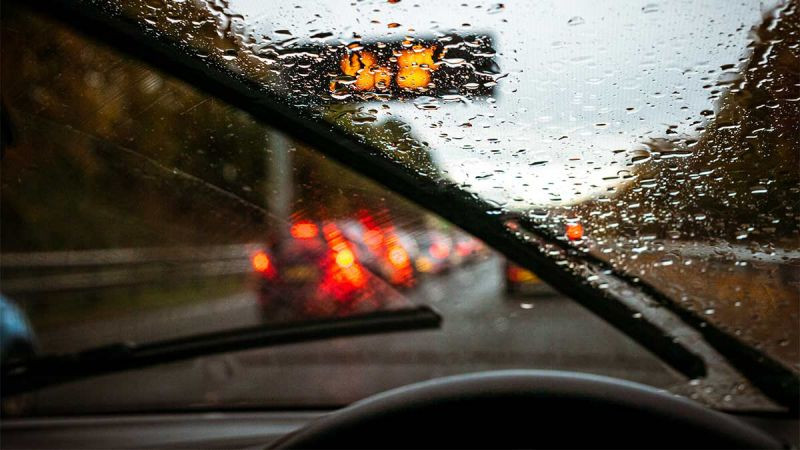Driving in low visibility conditions can be a daunting experience, even for the most experienced drivers. Whether it’s dense fog, heavy smoke, or the sudden onset of a haboob, knowing how to navigate through these challenging situations is crucial for your safety and that of others on the road. At Get Drivers Ed, we emphasize the importance of mastering low visibility driving techniques as part of our comprehensive drivers ed program. In this blog post, we'll explore various strategies to help you stay safe when visibility is compromised.
Understanding the Challenges of Low Visibility Driving
Low visibility conditions can occur due to several factors such as fog, smoke, heavy rain, or dust storms (haboobs). Each of these conditions presents unique challenges:
Fog: Reduces visibility drastically and can make it difficult to judge distances and see obstacles.
Smoke: Often caused by wildfires or industrial accidents, smoke can obscure vision and create hazardous driving conditions.
Haboobs: Sudden dust storms common in arid regions, causing near-zero visibility and difficult driving conditions.
Driving in such conditions requires not only patience and caution but also specific techniques that you can learn through a well-structured drivers ed program like the one offered by Get Drivers Ed.
Essential Low Visibility Driving Techniques
Reduce Speed
When visibility is low, your reaction time is significantly reduced. Lowering your speed gives you more time to react to any obstacles or sudden changes in the road. Remember, it’s not just about seeing the road ahead but also having enough time to respond appropriately.
Use Appropriate Lighting
Fog Lights: If your vehicle is equipped with fog lights, use them in foggy conditions. They are designed to cut through fog and improve your visibility.
Low Beams: In fog and smoke, use low beams instead of high beams. High beams can reflect off fog and smoke, making it harder to see.
Hazard Lights: In extremely low visibility, turning on your hazard lights can alert other drivers to your presence.
Increase Following Distance
Maintain a greater following distance than usual. This extra space provides more time to react if the vehicle in front of you suddenly stops or slows down.
Use the Right Lane
In low visibility conditions, it’s safer to drive in the right-hand lane. This lane is typically used for slower traffic, reducing the risk of collisions.
Avoid Sudden Movements
Make all movements, such as turns and lane changes, smoothly and gradually. Sudden movements can startle other drivers and increase the likelihood of accidents.
Follow Road Markings
Use road markings as a guide. When visibility is poor, road lines and reflectors can help you stay oriented on the road.
Use GPS and Roadside Assistance
GPS systems can provide additional guidance on the road ahead. Additionally, having access to roadside assistance through services like those offered by Get Drivers Ed can be invaluable in case of an emergency.
Be Prepared to Stop
If visibility becomes so poor that it’s unsafe to continue driving, find a safe place to pull over and wait until conditions improve. Turn on your hazard lights to alert other drivers that you are stopped.
Special Considerations for Different Conditions
Driving in Fog: Fog can vary in density. In patchy fog, be prepared for sudden changes in visibility. Avoid using cruise control so you can adjust your speed as needed.
Driving in Smoke: Be aware of the potential for health risks if you have respiratory issues. Keep your windows closed and the air conditioning on recirculate to minimize smoke intake.
Driving in a Haboob: Haboobs can come on quickly and with little warning. If you find yourself in one, pull over as soon as it is safe to do so. Turn off your lights to avoid confusing other drivers who may try to follow you.
How Get Drivers Ed Can Help
At Get Drivers Ed, our comprehensive drivers ed program includes detailed modules on handling various driving conditions, including low visibility scenarios. Our course is designed to equip you with the knowledge and skills needed to drive safely and confidently, no matter what challenges you face on the road.
By choosing Get Drivers Ed, you gain access to:
Interactive Lessons: Our online platform provides interactive and engaging lessons that you can complete at your own pace.
Experienced Instructors: Learn from experienced instructors who are passionate about road safety and ready to help you succeed.
Practical Tips and Techniques: Gain practical advice and techniques that you can apply immediately, making you a better and safer driver.
Conclusion: Stay Safe with Get Drivers Ed
Driving in low visibility conditions requires a special set of skills and a calm, cautious approach. By mastering these techniques, you can significantly reduce your risk of accidents and ensure your safety on the road. At Get Drivers Ed, we are dedicated to helping you become a confident and capable driver, ready to handle any situation.
Don't let low visibility catch you off guard. Enroll in our drivers ed program today and take the first step towards becoming a safer, more knowledgeable driver. Visit Get Drivers Ed now to learn more and start your journey to driving excellence. Remember, a well-prepared driver is a safe driver, and with Get Drivers Ed, you’re always in good hands.

